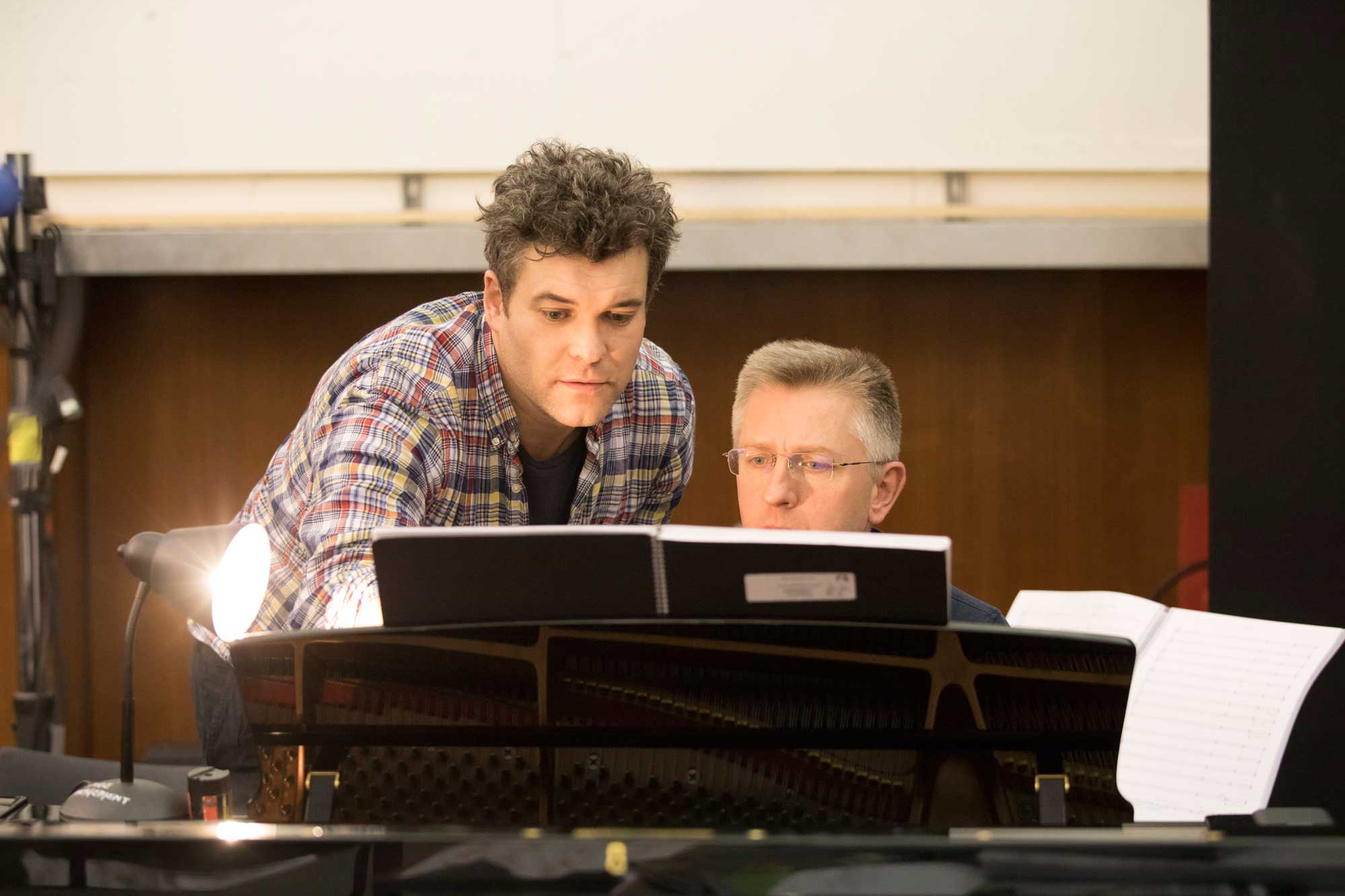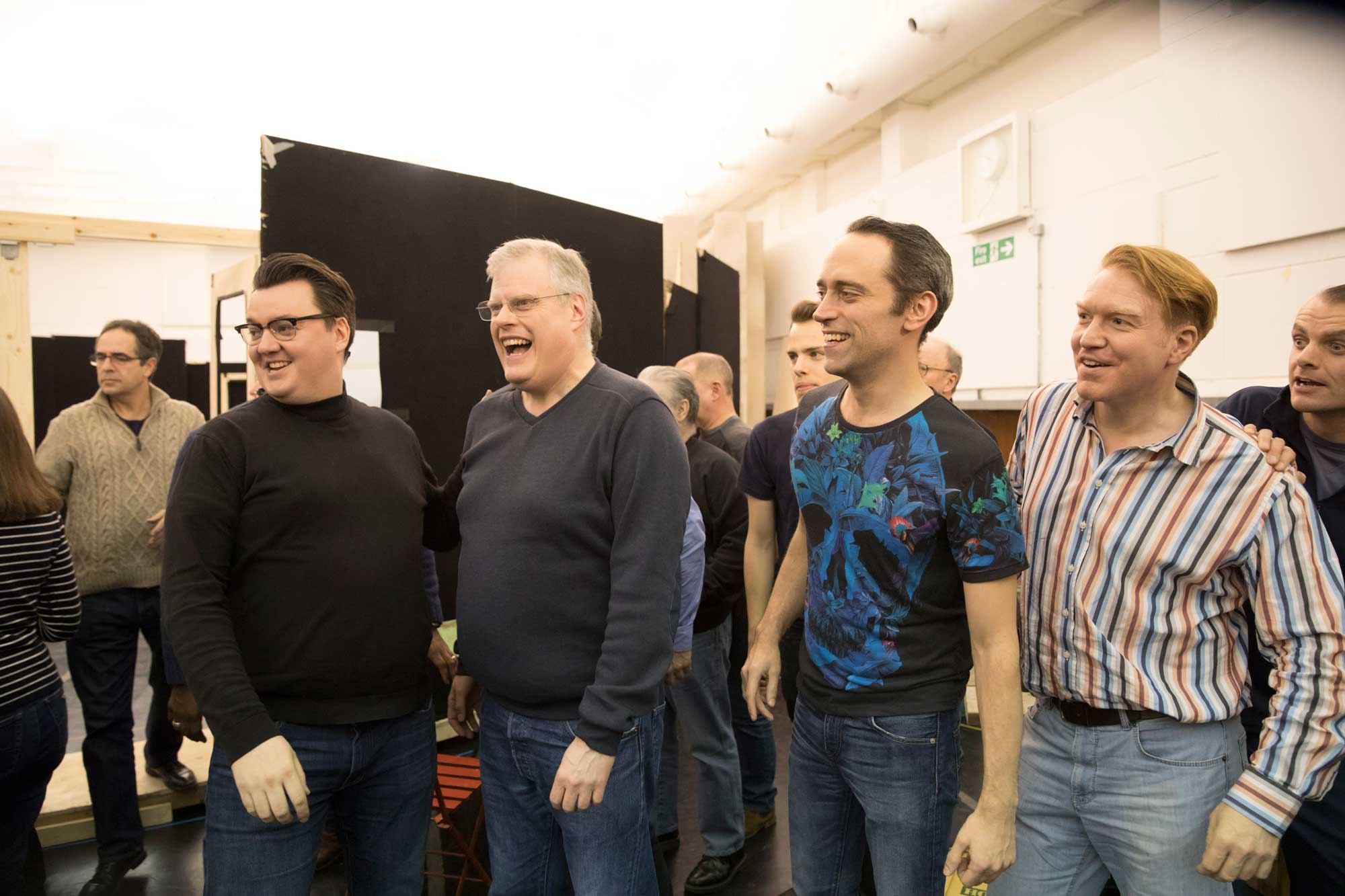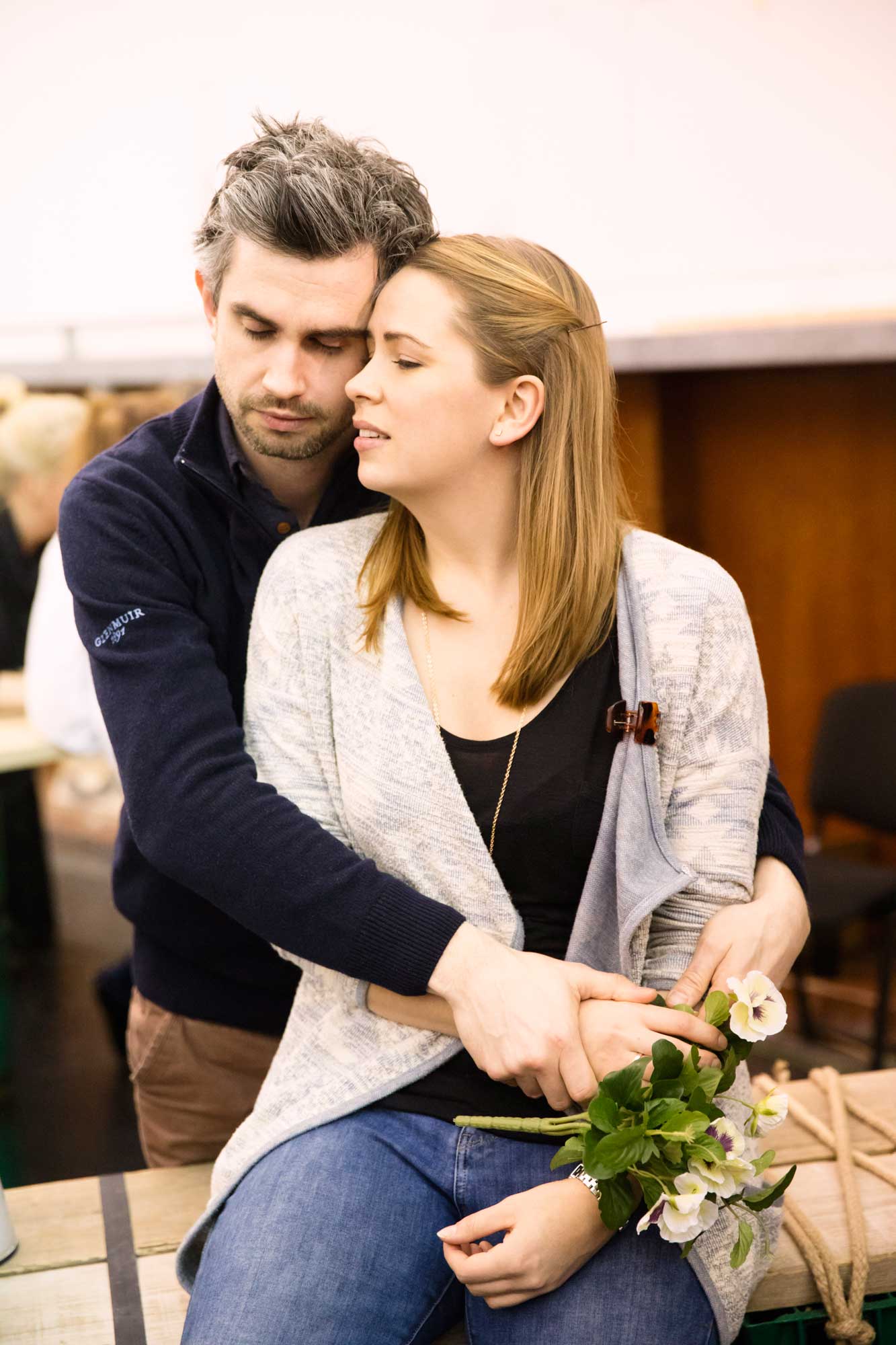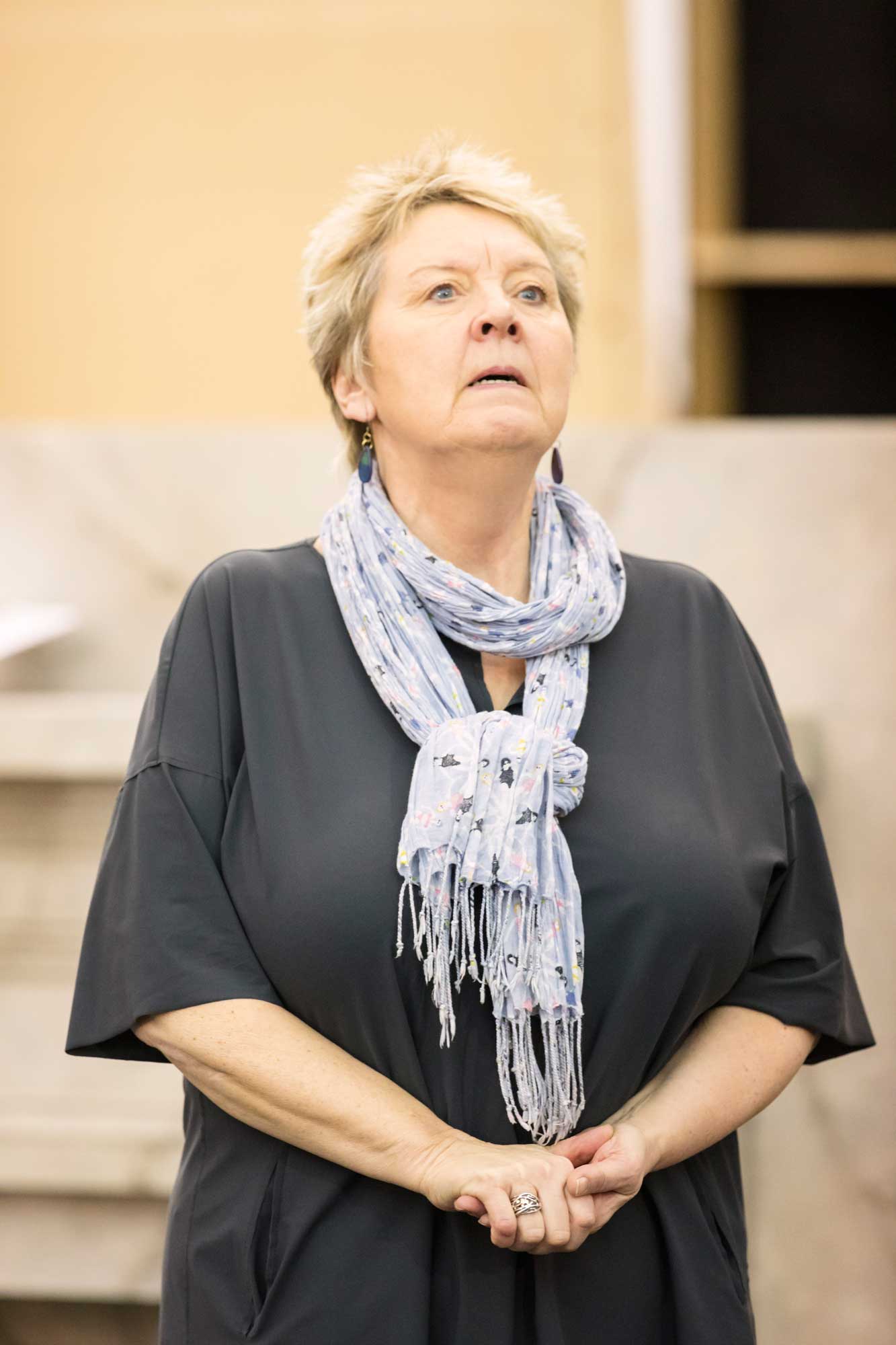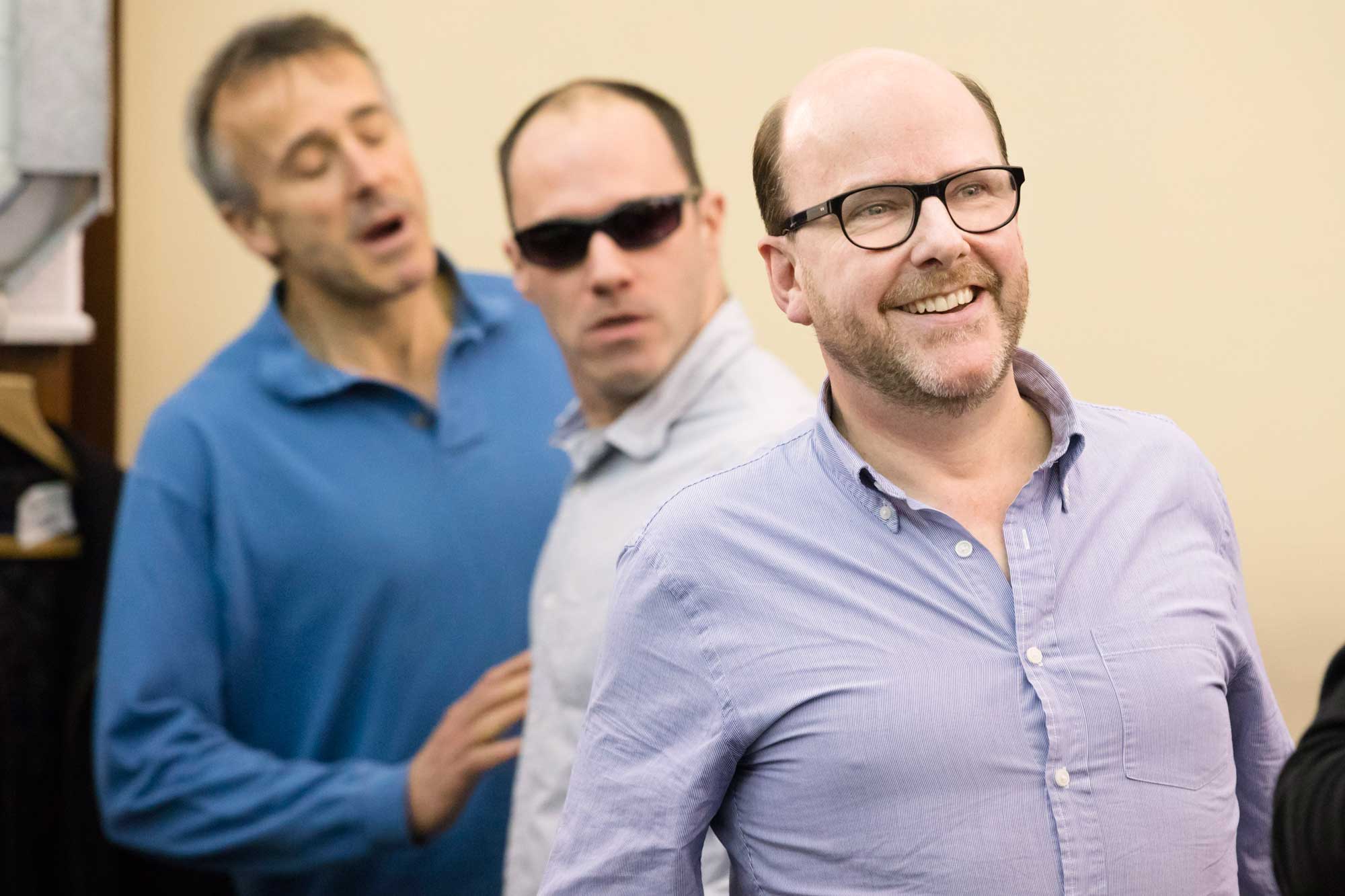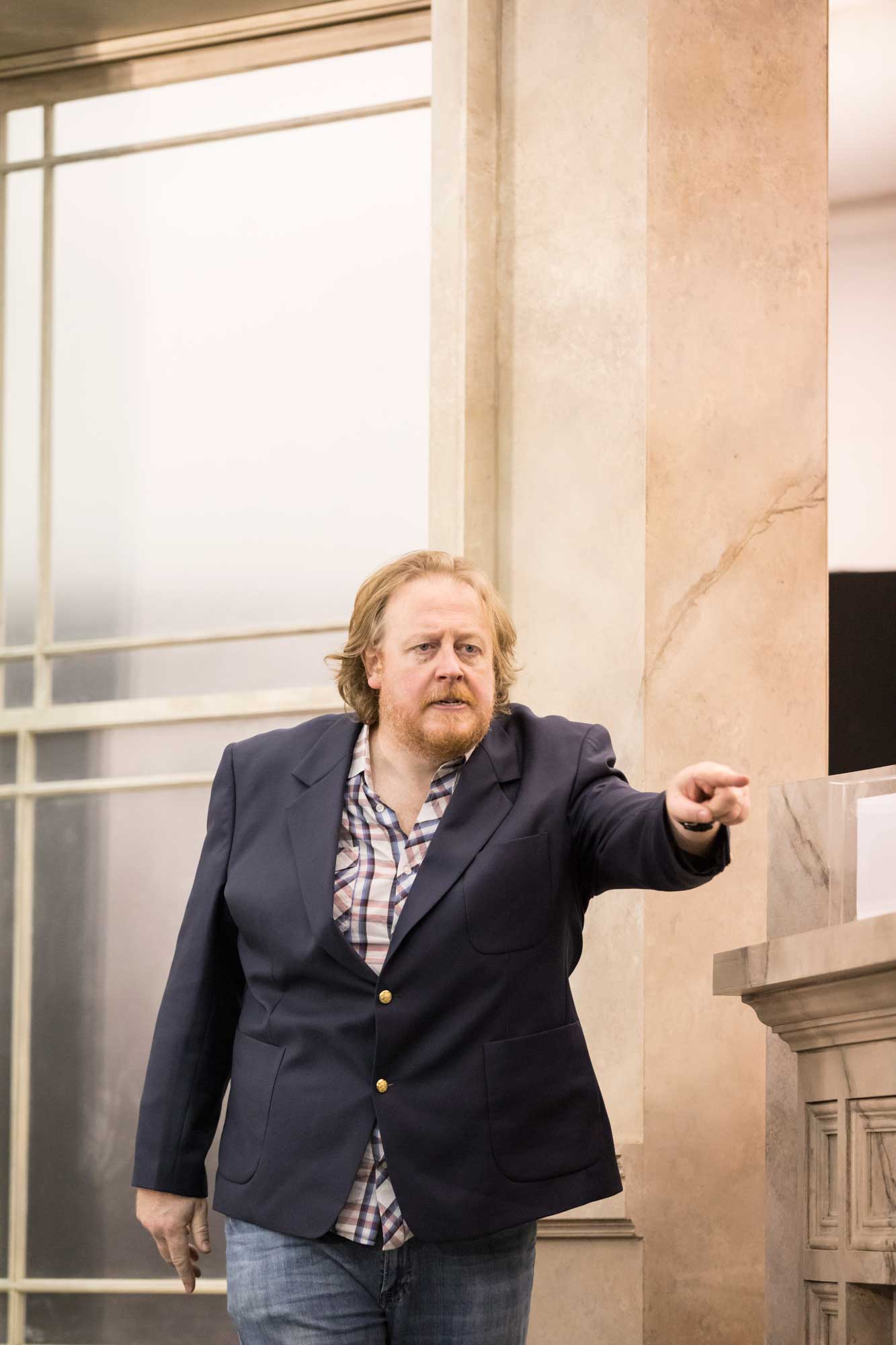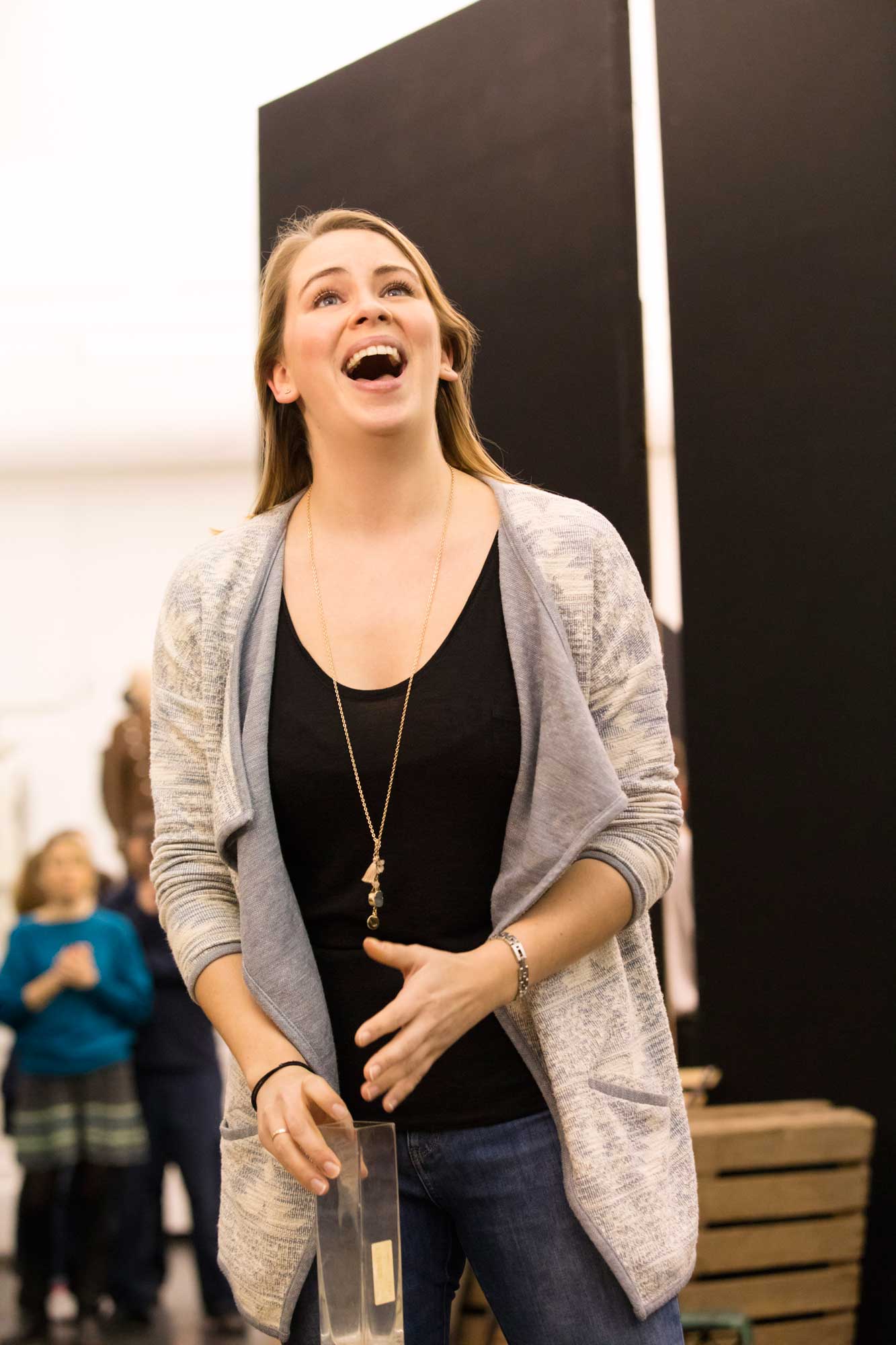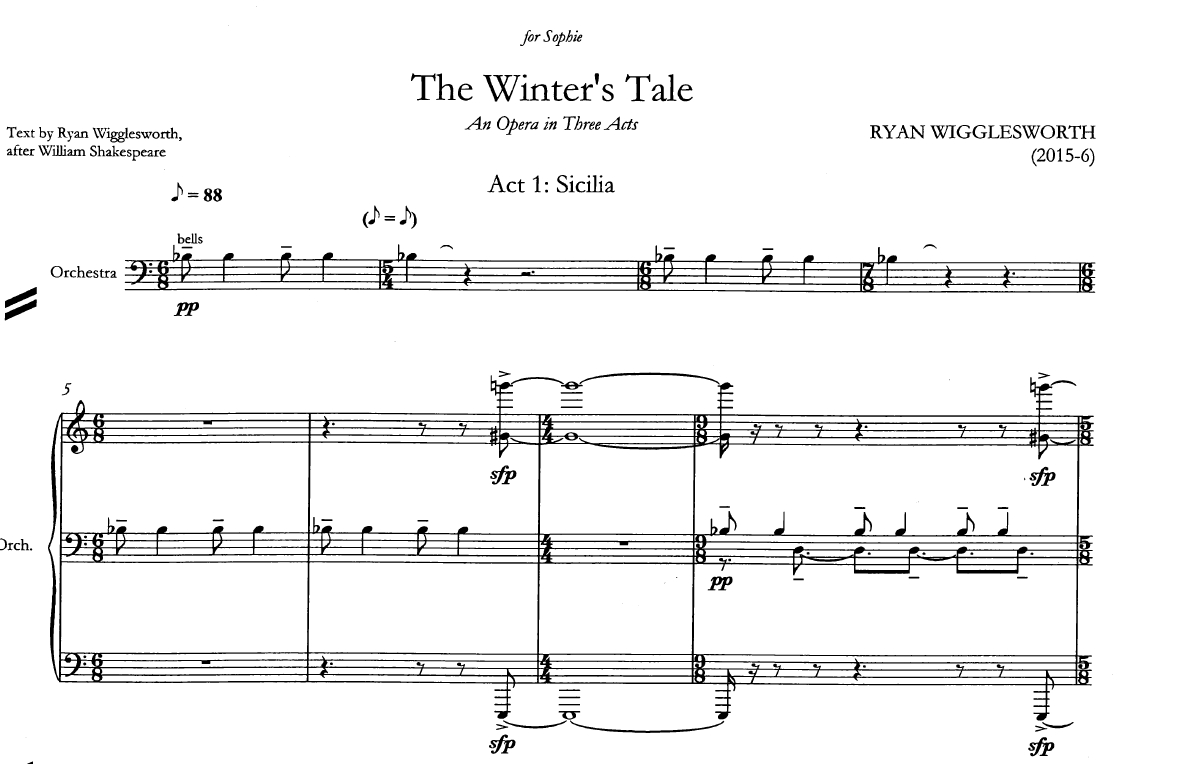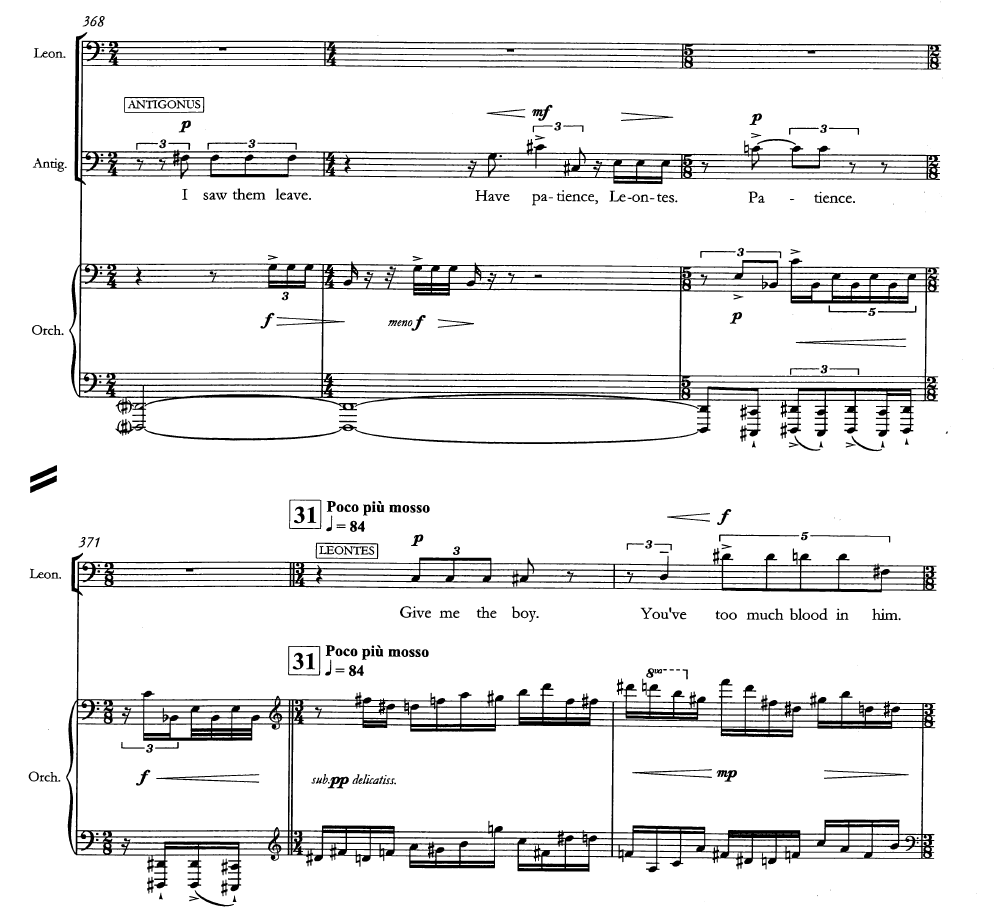The singers
The principal singers were cast at the very start of the creation process, allowing Wigglesworth to compose for voices he knew well. Knowing the particular colour of a singer’s voice, notes that sound good in their register and which vowels resonate, helped Wigglesworth to create the music for their characters.
Listen to an excerpt from the opera in rehearsal:
The opera features large crowd scenes performed by a chorus on and off stage. The traditional operatic trope of the chorus provides an opportunity to give a voice to the citizens that is not present in the play. In the trial scene in Act 1 for example, the chorus of Sicilian citizens – living under a tyrannical rule – protest against the arrest of their beloved queen.
An offstage chorus is used as a recurring device in the opera, sometimes drawing attention to the world outside that which is immediately pictured onstage, and at other times representing the inner world of the onstage characters.
ind out more about the rehearsal experience of Samantha Price, who performs the role of Perdita, in her weekly vlog.
The orchestration
The orchestra has an important role in conveying parts of the narrative. Percussion instruments including bells and chimes are heard throughout the piece, symbolising the advancement of time. The very opening of the opera sets the scene through the use of bell tolls and sustained strings. At other points in the opera, the whole orchestra copies the music of the bell tolls to become an enormous, multi-layered timepiece, taking on the character of Time in the play.
Wigglesworth has also written a number of musical interludes in which the orchestra takes on the role of conveying dramatic action that Shakespeare alludes to but does not write, such as the reunion between Perdita and Leontes, and between the two kings.
Explore excerpts from the vocal score:
Read more about music and Shakespeare.
